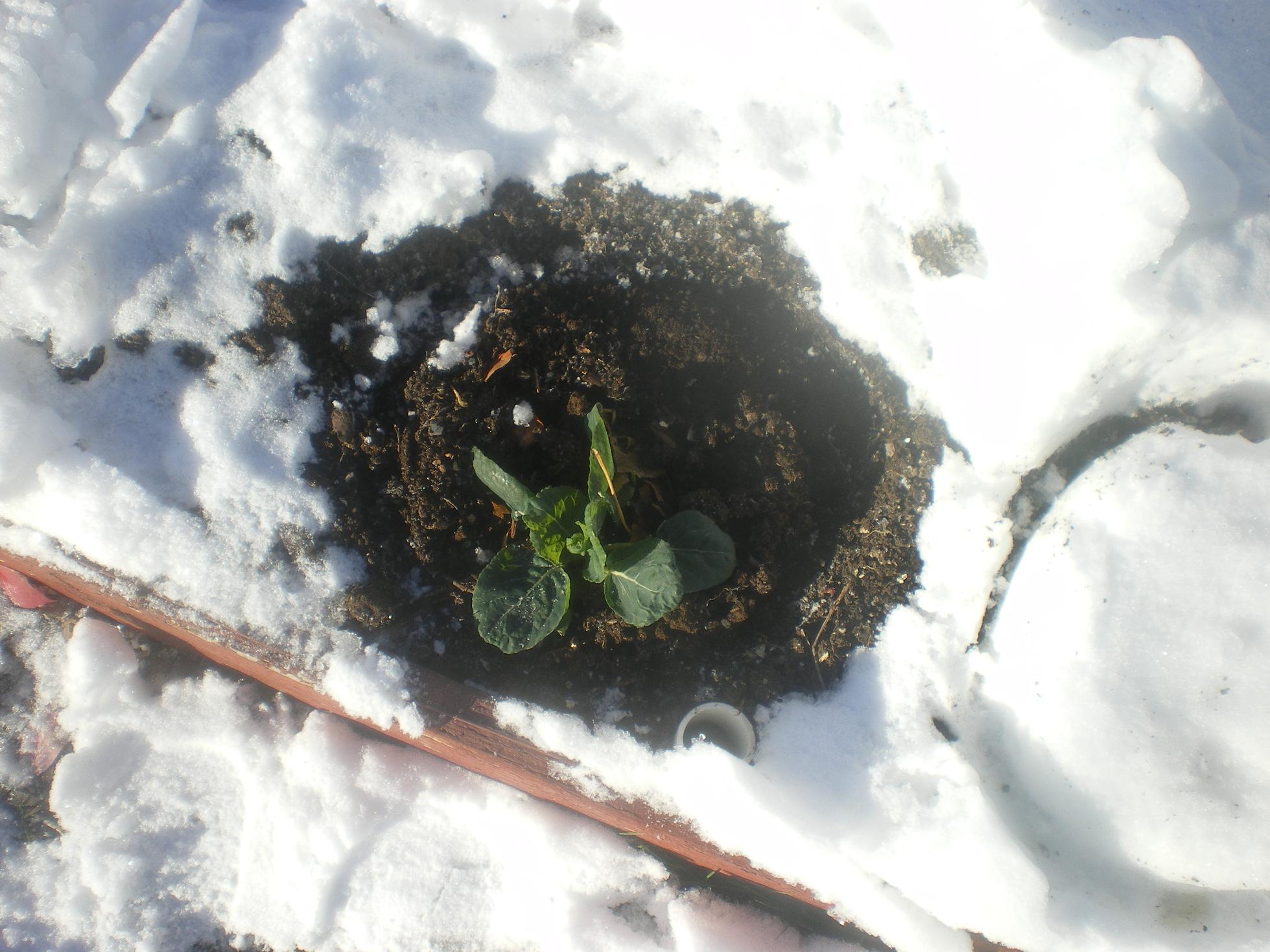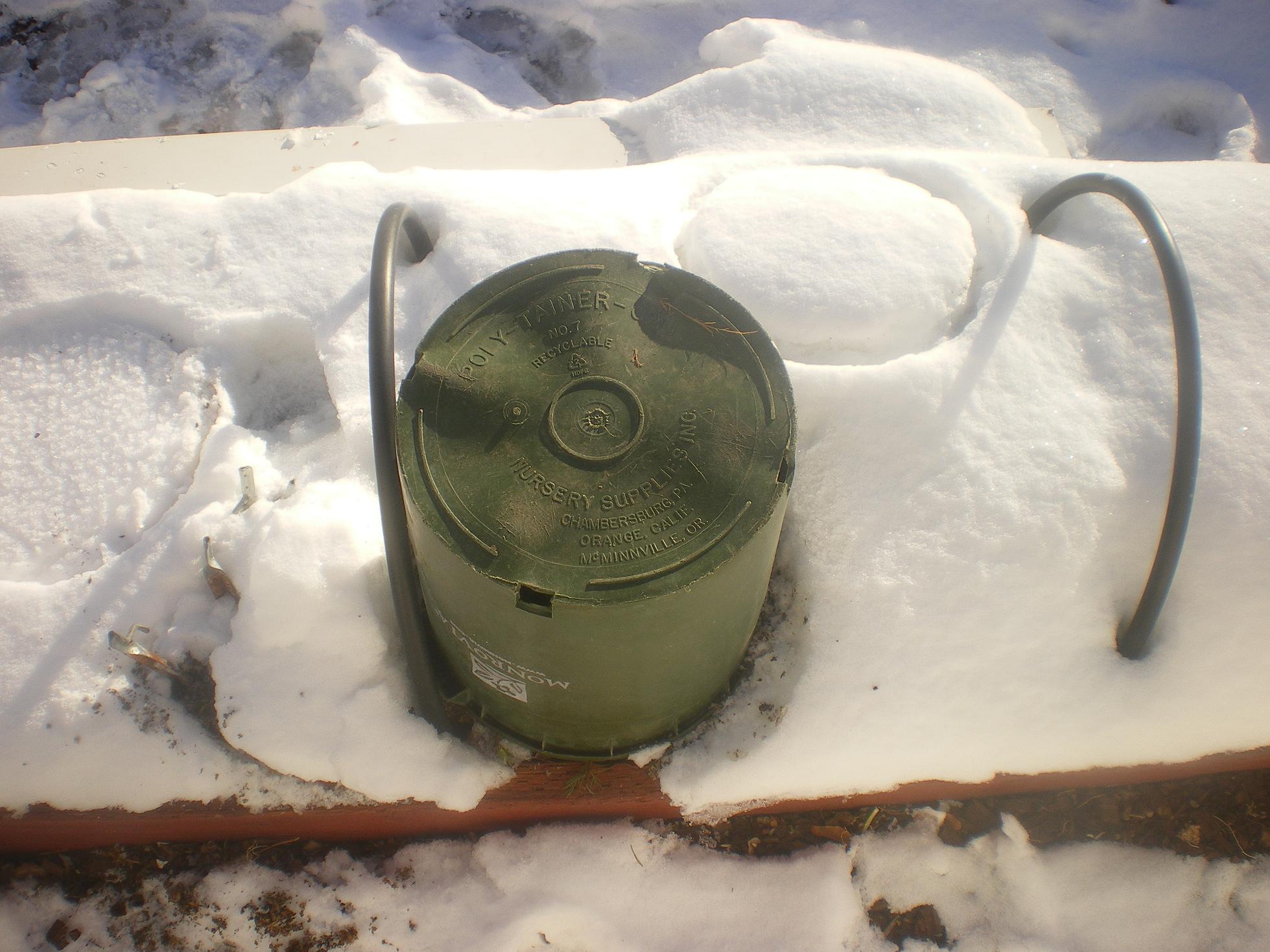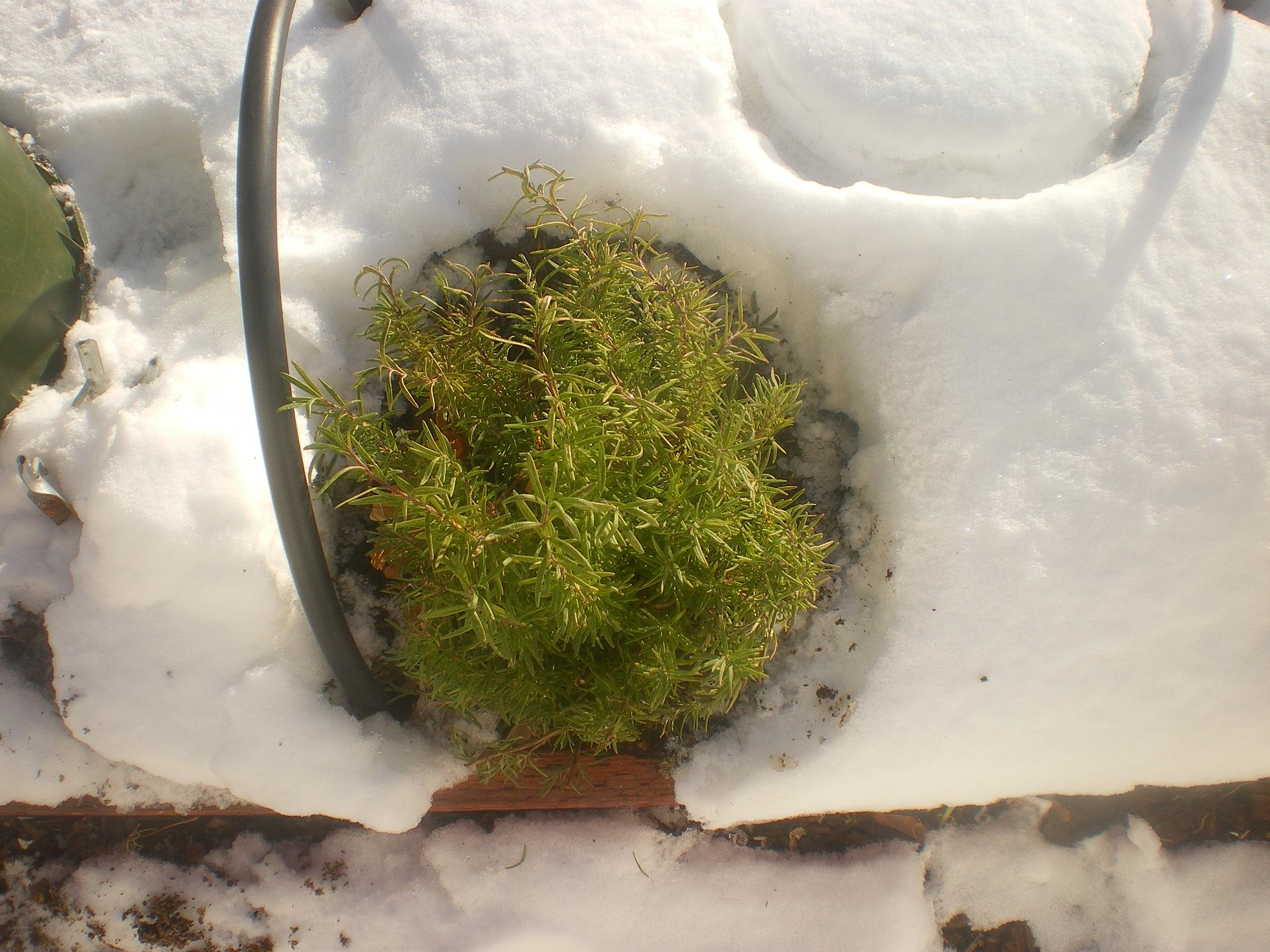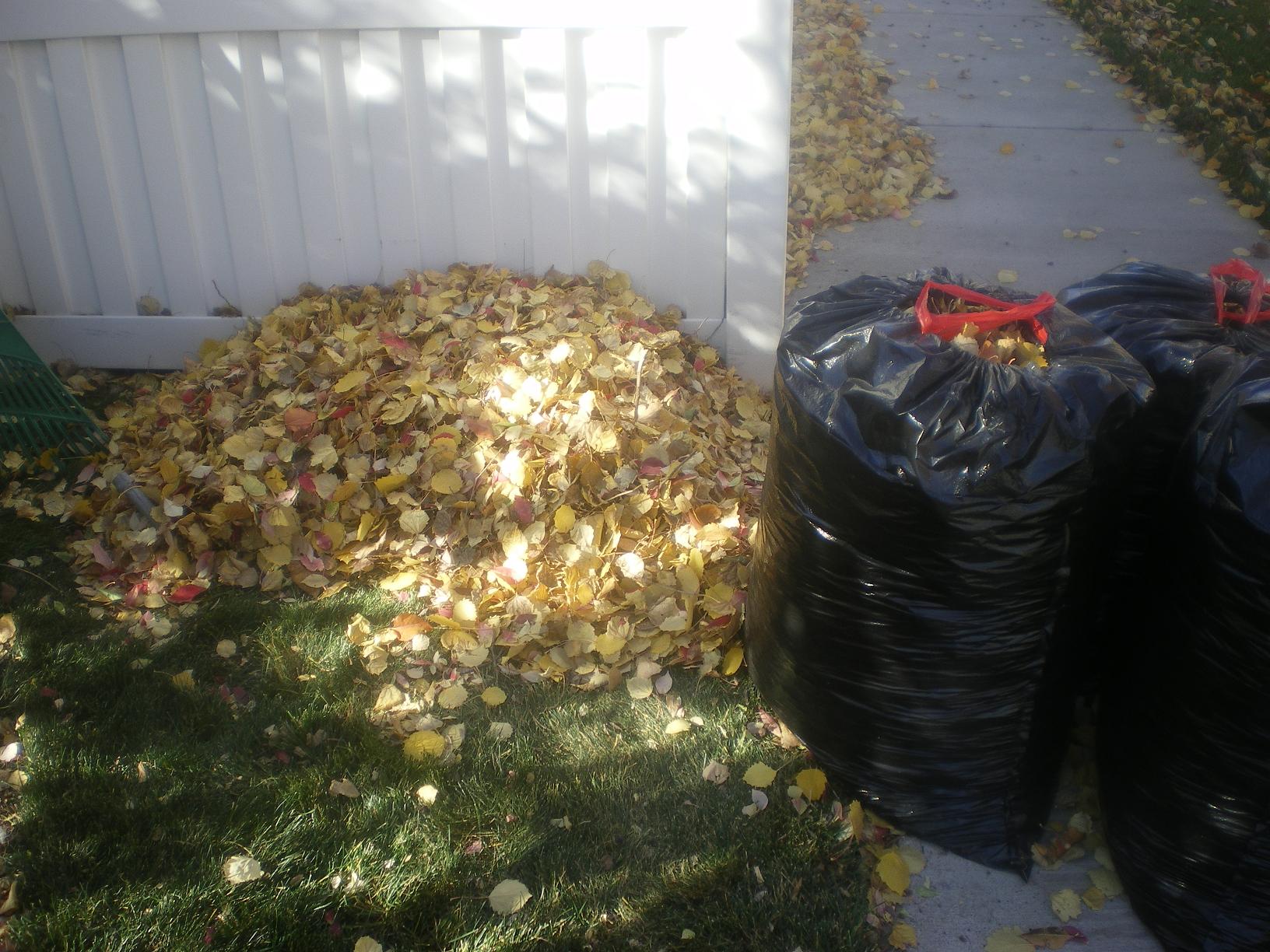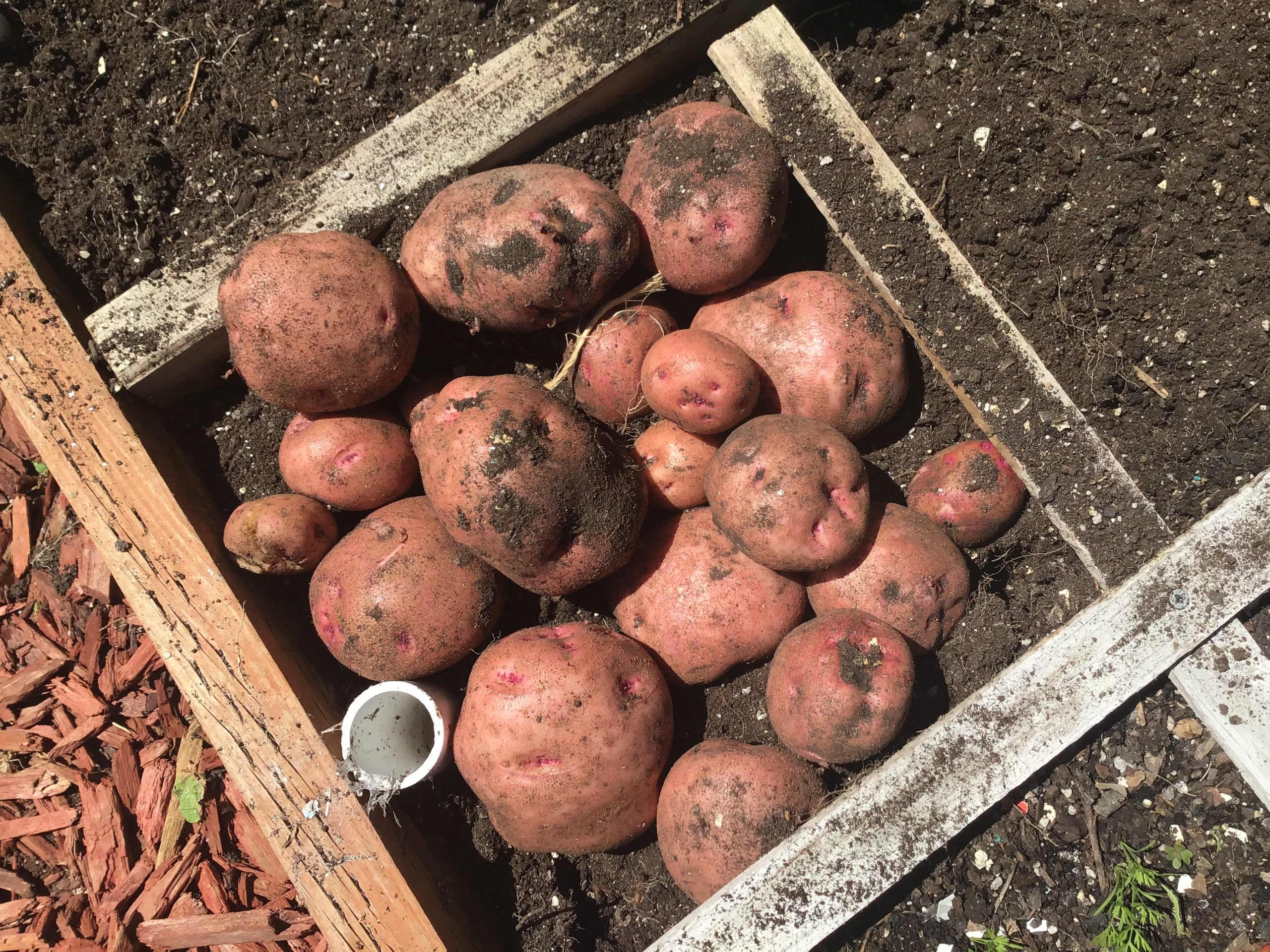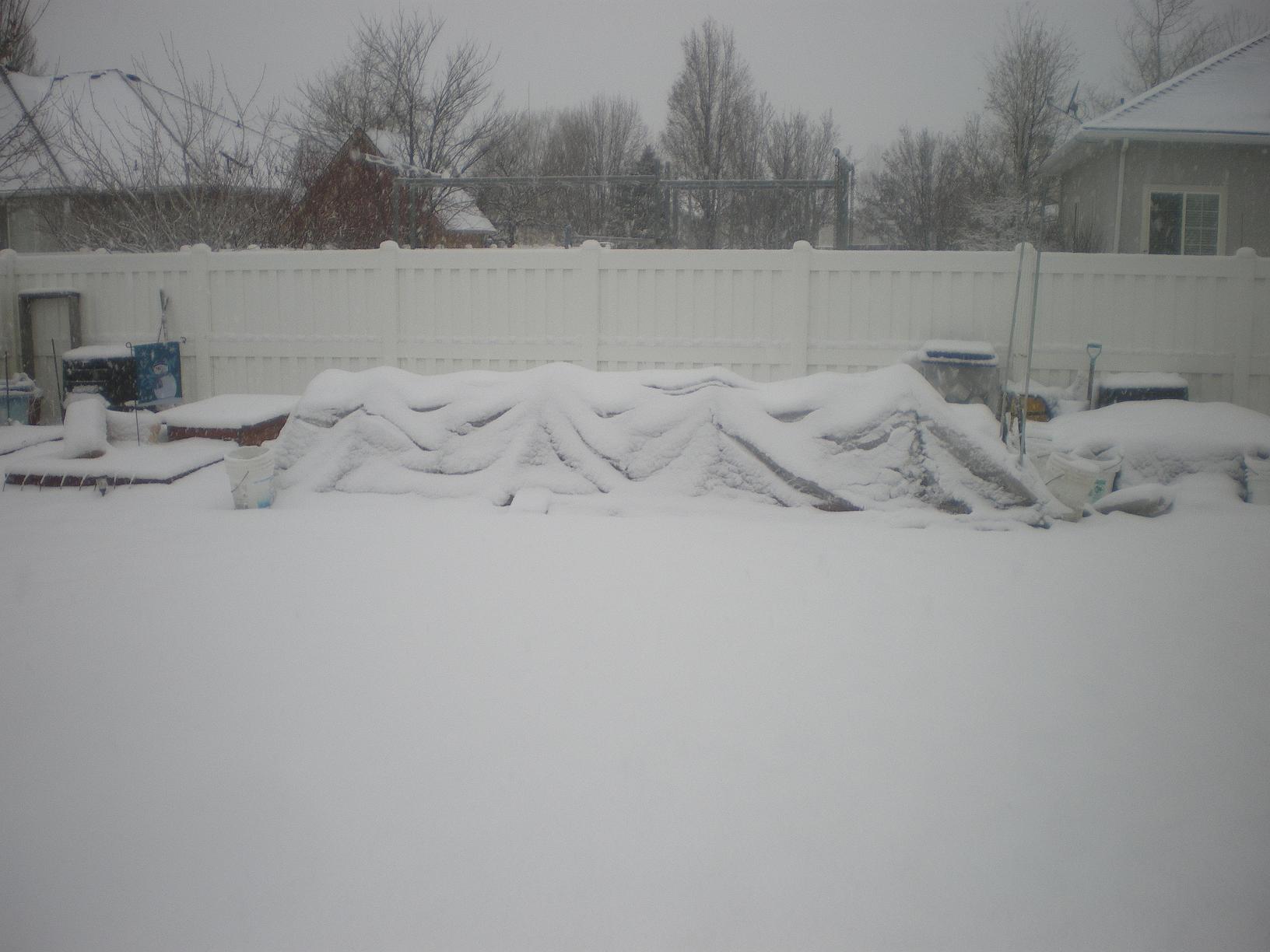 We live in Zone 6 here in Salt Lake City. The weather usually has people thinking that gardening season is over. I think they’re right-for the warm weather crops. This will be my winter experiment. Can I grow garden produce and vegetables right through the winter despite the snow and extended freezing temperatures? What I really should’ve done was to have my gardens planted in early October for winter harvesting vs. winter gardening. I’ve grown in late winter before, but those gardens started in the 3rd week of February. January is our coldest month so this will be a challenge. You’ve probably seen how I’ve prepped my soil in the fall from previous posts. After 13 years my soil of Mel’s mix is now 100% compost. It’s a heavier soil mix but still perfectly suited to do anything you need. Given the fact that the soil is as good as it can be, the next thing I have to do is thaw out the soil. I went back to the gardens the other day and tried to put a pitch fork into the soil-no go. It was frozen solid. So I need to heat the place up. You can see my method from the picture-an unheated greenhouse. This is nothing more than flexible PVC held in place by re-bar inside the SFG boxes. Now all I need to do is cover it with plastic-the equivalent of putting a sweater over my boxes. The trick is to take advantage of free solar energy(sun)to then warm your soil in preparation to start planting. Your biggest challenge is to protect your garden from the wind(think windchill.) By covering with plastic you’ll also be able to protect your plants from wet/freeze/dry periods. This is what’s really hard on plants. The last key is growing things that don’t mind cold weather. I think one of the biggest mistakes we sometimes make is trying to make warm weather crops-summer items-grow in the off-season. Why force it? Growing cold weather things will make your job a lot easier. And the cold weather will take away some of the bitterness associated with some of these crops. Because your gardens are limited in size with the square foot gardening system, it then becomes much easier to protect and take care of it. With just one layer of plastic your boxes will be at least 30 degrees warmer during the day. At night-about 15 degrees, maybe a little higher. Two days after this snowstorm hit my soil was cold but no longer frozen. I should be ready to plant in about another 4 or 5 days. Just cover your garden, heat it up, make sure you’re choosing cold weather crops, and you’ll be ready to plant in about a week-two weeks at the most. I hope you’ll come back to visit so you can follow this winter garden experiment.
We live in Zone 6 here in Salt Lake City. The weather usually has people thinking that gardening season is over. I think they’re right-for the warm weather crops. This will be my winter experiment. Can I grow garden produce and vegetables right through the winter despite the snow and extended freezing temperatures? What I really should’ve done was to have my gardens planted in early October for winter harvesting vs. winter gardening. I’ve grown in late winter before, but those gardens started in the 3rd week of February. January is our coldest month so this will be a challenge. You’ve probably seen how I’ve prepped my soil in the fall from previous posts. After 13 years my soil of Mel’s mix is now 100% compost. It’s a heavier soil mix but still perfectly suited to do anything you need. Given the fact that the soil is as good as it can be, the next thing I have to do is thaw out the soil. I went back to the gardens the other day and tried to put a pitch fork into the soil-no go. It was frozen solid. So I need to heat the place up. You can see my method from the picture-an unheated greenhouse. This is nothing more than flexible PVC held in place by re-bar inside the SFG boxes. Now all I need to do is cover it with plastic-the equivalent of putting a sweater over my boxes. The trick is to take advantage of free solar energy(sun)to then warm your soil in preparation to start planting. Your biggest challenge is to protect your garden from the wind(think windchill.) By covering with plastic you’ll also be able to protect your plants from wet/freeze/dry periods. This is what’s really hard on plants. The last key is growing things that don’t mind cold weather. I think one of the biggest mistakes we sometimes make is trying to make warm weather crops-summer items-grow in the off-season. Why force it? Growing cold weather things will make your job a lot easier. And the cold weather will take away some of the bitterness associated with some of these crops. Because your gardens are limited in size with the square foot gardening system, it then becomes much easier to protect and take care of it. With just one layer of plastic your boxes will be at least 30 degrees warmer during the day. At night-about 15 degrees, maybe a little higher. Two days after this snowstorm hit my soil was cold but no longer frozen. I should be ready to plant in about another 4 or 5 days. Just cover your garden, heat it up, make sure you’re choosing cold weather crops, and you’ll be ready to plant in about a week-two weeks at the most. I hope you’ll come back to visit so you can follow this winter garden experiment.
[ois skin=”below post”]

